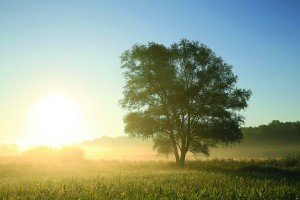When people hear the word sustainability, they think of it as an environmental buzzword. It may seem like being green takes too much money, time and effort, but Kirsten Buhls, a natural resource extension agent for Master Gardeners of Northern Virginia, says a sustainable garden is just the opposite.
“First of all, I define sustainable as being an action upon the land that does not do harm to the land and does not have a result that requires the quality of the land to spend energy and resources to recover from [it],” Buhls says.
To start making your garden thrive with fewer resources, Buhls says you need to look around your yard and get a site analysis of its conditions. Is it shady or sunny? Is the soil well or poorly drained? This will help gauge what plants would thrive and what would require more work to maintain.
It’s also a good idea to do a soil fertility test. Buhls says this area’s soil pH, or acidity level, is usually 7 or above. Seven is neutral—pure water has a pH of 7—and anything below that is more acidic.
After you get a better understanding of your local environment, it’s time to start planting. Below are some trees, shrubs and flowers you can plant followed by some tips on how to keep any plant safe from (or for) pests.
Native Plants

Invite the bugs. The native white oak tree supports over 500 types of insects. It may seem contradictory to make a home for them into your garden, but Buhls says that these little critters are important in supporting a healthy garden.

Make room for these migrators. Milkweed is a perennial that attracts the well-known North American monarch butterfly because it supplies food for the larvae. There are seven kinds of milkweed in shades like white, pink and red.

Cool down in the city. To beat the urban heat effect, Buhls suggests planting a willow oak tree because it can tolerate heat conditions. Or try out bluestem, which is an ornamental and spiky grass that can survive in drought conditions.

Smell sweet nature. The bayberry shrub and the ragweed goldenrod are both highly scented and also add a pop of color to a landscape. According to the NoVA Master Gardeners website, goldenrods enjoy wet soil and at least a medium amount of water.
To find more plants native to this area, visit the Master Gardeners of Northern Virginia website and check out their “Tried and True” list.
(September 2015)